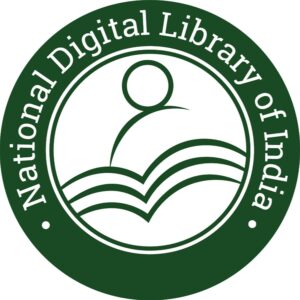Recently, I was entrusted with the task of formulating a staff development policy for our university’s Library Services Department. It’s commendable to note that our library staff are always on the lookout for opportunities to enhance their skills. They actively participate in training and ongoing professional development. There’s always something happening, whether it’s awareness sessions, training modules, or staff preparing to attend professional seminars. Some are even enrolled in academic or certified training courses. Furthermore, there’s a culture of knowledge sharing where team members educate each other on vital system or software skills. Newcomers aren’t left out either; they undergo comprehensive induction training. Given the diverse range of professional development activities, the library’s leadership team felt the need for a policy. The aim? To provide a structured approach to the available training and development initiatives and to ensure everyone has an equal chance to benefit from them.
The Motivation Behind the Policy
I consider myself lucky. The primary motivation behind this policy isn’t a lack of interest in professional growth but rather a strong desire for it. However, I recognize that not everyone has this luxury. In some places, there’s a noticeable lack of enthusiasm, or the prevailing institutional culture doesn’t support proactive training and development. This is why, when embarking on the journey of crafting a staff development policy, it’s crucial to first address the fundamental question: Why is continuous professional development essential? By understanding the “Why?”, it becomes easier to navigate the “How?” and “What?” of the policy.
Why invest time and resources? What’s the significance of employee training and growth?
Libraries, regardless of their sector, are constantly evolving, particularly in the digital age we live in. The shifting political and economic landscapes further emphasize the need for libraries to be adaptable, nimble, and perpetually progressing. To navigate these changes, it’s crucial for library staff to consistently enhance their professional and technical expertise. While some may argue that the mere survival of a library, by strategically aligning with its governing institution, is a compelling reason to prioritize training and development, there are several other compelling reasons for library professionals to pursue continuous professional development (CPD) and for library leaders to champion it.
Boosting Morale and Motivation
A foundational goal for library managers should be to foster a motivated team, as this is key to delivering top-notch services. By ensuring that staff members are equipped with the necessary skills to excel in their roles, managers can significantly boost morale. It’s a simple yet often overlooked fact: when staff feel competent and confident in their abilities, they are more motivated.
The digital revolution has brought about a plethora of changes, from the introduction of new software and systems to the need for IT support for library patrons, not to mention staying updated on the myriad of digital resources available. Failing to provide the necessary training and development to address these evolving needs can result in a workforce that feels overwhelmed and underprepared. This isn’t a reflection of the staff’s capabilities but rather a consequence of not receiving the right support and training. Thus, for libraries to thrive and serve their communities effectively, investing in staff training and development is not just beneficial—it’s essential.
Recognizing Achievements Beyond Monetary Rewards
In many libraries, financial constraints or other factors might limit the ability of managers to provide monetary rewards to staff for exceptional performance or going above and beyond their duties. However, there are alternative ways to acknowledge and celebrate the accomplishments of dedicated staff members. Continuous Professional Development (CPD) opportunities present one such avenue.
Imagine a staff member who consistently showcases leadership or management qualities, even if their current position doesn’t necessarily demand it. As a gesture of appreciation and recognition for their proactive approach, managers could offer them a chance to join a leadership training program. This not only acknowledges their potential but also equips them with the tools to further hone their skills.
Similarly, if a library staff member has been particularly innovative or has introduced a creative approach to their work, managers can encourage them to submit their ideas or findings to a conference. By facilitating and supporting their attendance at such events, managers not only provide them with a platform to share their insights but also offer them a valuable learning experience. Presenting at conferences not only benefits the individual but also enhances the library’s reputation. Moreover, attending these events can be a source of inspiration and knowledge, further contributing to the individual’s professional growth.
Navigating Career Growth in Library and Information Work
The realm of library, information, and knowledge work is vast, offering a plethora of roles and positions. This diversity provides library professionals with a myriad of avenues to explore and grow in their careers. However, to truly tap into their potential and embark on new professional journeys, individuals often require the right blend of guidance, motivation, and backing from their superiors.
It’s imperative for those at the helm of library institutions to strategically nurture the ambitions and talents of their team members. A classic approach is to motivate budding managers and leaders to step up and consider roles higher up the management ladder. Yet, it’s crucial to recognize that not every library and information professional aspires to managerial or leadership roles. For these individuals, the opportunity to immerse themselves in varied experiences and diverse work settings can be just as fulfilling. Continuous Professional Development (CPD) serves as an excellent tool to facilitate such expansive experiences.
Understanding Team Dynamics
Recognizing the needs of an individual is straightforward, but it’s equally crucial to be attuned to the dynamics within a team. Teams often experience shifts and transformations collectively. By focusing on the holistic development of a team or even an entire department, you ensure that all members confront challenges and seize opportunities in unison.
The Power of Team Bonding
There are moments when it’s essential for a team to forge stronger connections and become accustomed to collaborating seamlessly. Hosting “away days” or organizing special team events can be instrumental in achieving this. This approach to team development proves especially beneficial for newly-formed teams or when those in leadership roles decide to embark on a joint leadership development journey.
Identifying Training and Development Needs in Libraries
Library professionals and their supervisors must recognize when and what kind of training is necessary. It’s essential that Continuous Professional Development (CPD) in library institutions is driven by strategic objectives, ensuring that the library can meet its overarching goals. A clear staff development policy can guide the process of pinpointing and addressing training and CPD needs. The yearly performance review is an excellent time for employees to discuss their performance and set goals for the upcoming year. During these reviews, staff should discuss the training they need to achieve both personal and team goals. It’s crucial that these conversations are taken to heart and acted upon, ensuring that the review process is seen as a vital component of service delivery and strategic planning.
Ongoing Conversations about CPD
CPD shouldn’t only be a topic during review periods; it should be a continuous conversation. Many library institutions might have a dedicated committee for staff development that identifies training needs, plans training sessions, and keeps an eye out for external CPD opportunities. Similarly, library leadership teams should always have “Training and CPD” on their meeting agendas to address training needs as they arise.
Diving into the World of CPD
Having established the importance and methods of identifying training needs, it’s time to explore what staff development actually entails and how to avail these opportunities. While many immediately think of conferences when CPD is mentioned, there’s a plethora of training avenues for library professionals:
Conferences: Conferences remain a cornerstone of CPD. Especially in academic libraries and scholarly publishing, there’s no shortage of conferences offering innovative learning experiences. They provide insights into emerging trends, opportunities to share or learn best practices, meet vendors, present findings, connect with inspiring professionals, and network with peers.
Internal Training Programs: If a library is part of a larger entity, like a university or hospital, there might be internal training programs available. These can cover IT, customer service, or general institutional activities. Libraries can also host their own training events, ensuring a proactive approach to staff development.
External Training Programs: External library associations, from local groups to national bodies like the American Library Association or the Chartered Institute of Library and Information Professionals, often host events throughout the year. These events are perfect for specialized training and networking.
Formal Education and Accreditation: Some staff might benefit from formal academic programs or vocational training in areas like IT, media, or customer service. Libraries can also encourage staff to seek professional recognition through chartership or fellowship of professional bodies.
Job Shadowing: This cost-effective method allows staff to gain a broader experience within the library. It’s most effective when there are clear objectives set for the shadowing experience.
Coaching: Especially beneficial for those new to a role or facing challenges, coaching can be invaluable. It’s particularly useful for those in leadership roles or undergoing significant change.
Mentoring: Internal mentoring programs can support staff adjusting to new roles within the organization, providing guidance and expertise.
Reading Groups: Encouraging reading groups among staff can foster reflection, critical thinking, and team development, centered around professional literature.
Scholarship: Many librarians engage in innovative practices and have a desire to share their experiences. Conferences and scholarly publications offer platforms for this, making scholarship another valuable CPD avenue.
Concluding Thoughts
This overview of training and CPD in the library context is just the tip of the iceberg. There are countless reasons and methods for pursuing CPD. This reflection serves as a foundation for understanding the significance of training and development. It underscores the strategic importance of CPD in guiding library services.
One aspect of CPD that deserves emphasis is reflection. Reflecting on our daily tasks, future plans, and career trajectories is essential. All the mentioned CPD platforms facilitate this reflection. In our fast-paced work environments, finding time for reflection might seem challenging, but it’s through reflection that we truly understand our effectiveness. Taking time to reflect on our practices, skills, and future is invaluable. This reflection underscores the importance of investing in training and development.














